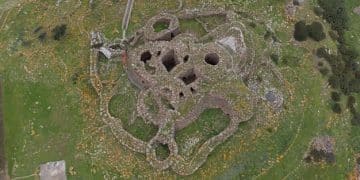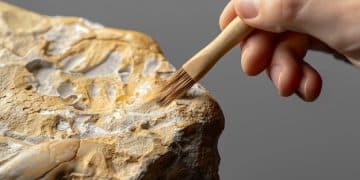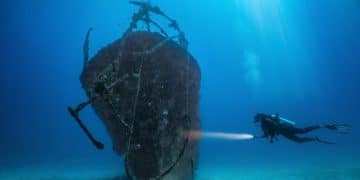Virtual Ancient America: Reconstructing Architecture
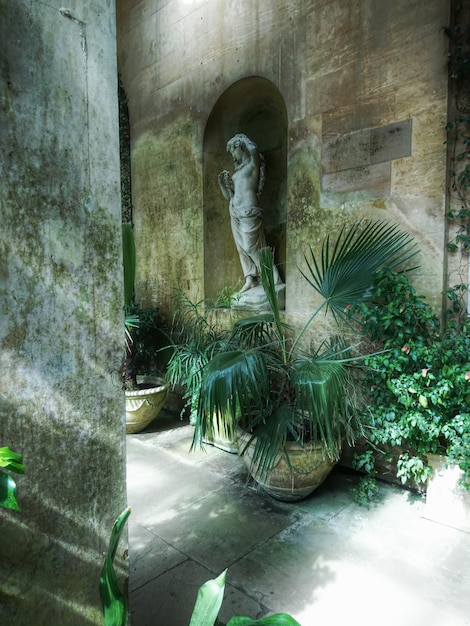
Modern archaeology leverages advanced digital techniques to virtually reconstruct ancient American architecture, transforming raw archaeological data into immersive 3D models that reveal societal structures and cultural practices of past civilizations.
The intricate tapestry of ancient civilizations across the Americas, from the towering pyramids of Mesoamerica to the enigmatic settlements of the Andes, continues to captivate scholars and the public alike. Yet, interpreting the often-ruined remnants of their monumental constructions presents a significant challenge. This is where the burgeoning field of digital archaeology steps in, fundamentally changing how we understand these vanished worlds. The ability to bring these structures back to life, even if only virtually, offers unparalleled insights into the minds and lives of their creators. This article delves into how Reconstructing Ancient American Architecture: How Archaeological Data is Being Used to Create Virtual Reconstructions is bridging the past and the present, offering a dynamic new lens through which to explore history.
The Digital Revolution in Archaeology: Beyond the Pickaxe
Archaeology has long relied on meticulous excavation and analog recording methods to uncover the secrets of the past. While these traditional techniques remain foundational, the digital revolution has introduced a host of new tools that are transforming how archaeological data is collected, analyzed, and presented. This shift is particularly impactful for understanding ancient architecture, where weathered stone and decaying organic materials often leave only fragments of original structures.
Modern archaeological practice now routinely integrates technologies like LiDAR (Light Detection and Ranging), photogrammetry, and GPR (Ground-Penetrating Radar) to capture unprecedented levels of detail from archaeological sites. These digital data streams provide the raw material for virtual reconstructions, offering a comprehensive and precisely measured understanding of architectural remains. The transition from two-dimensional sketches and photographs to multi-layered, three-dimensional datasets represents a paradigm shift, enabling archaeologists to visualize complex structures and spatial relationships that were previously difficult to grasp.
Mapping the Unseen: LiDAR and GPR
LiDAR technology, often deployed from aircraft or drones, can penetrate dense forest canopies to map terrain and hidden structures below. This has been revolutionary in the Americas, revealing previously unknown cities and extensive agricultural systems in areas like the Amazon and Central American jungles. The data collected provides highly accurate topographic maps and outlines of buried structures, forming a crucial baseline for virtual reconstruction efforts. GPR, on the other hand, is used for subsurface imaging, detecting buried walls, foundations, and other features without disturbing the ground. This non-invasive approach is invaluable for mapping the layouts of ancient buildings before or during excavation.
- LiDAR surveys: Uncover hidden cities and extensive networks under dense vegetation, providing detailed topographical and structural data.
- Ground-Penetrating Radar (GPR): Maps subterranean features like foundations and buried walls, offering non-destructive insights into architectural layouts.
- Digital Elevation Models (DEMs): Generated from LiDAR, these models show precise ground contours and the subtle traces of human modification of landscapes.
Capturing the Visible: Photogrammetry and Structured Light Scanning
For standing ruins or excavated features, photogrammetry is a game-changer. This technique involves taking hundreds or thousands of overlapping photographs of an object or site from various angles, which are then processed by specialized software to create accurate 3D models. The resulting models are not only geometrically precise but also capture detailed surface textures and colors. Structured light scanning offers even greater precision for smaller objects or intricate architectural details, projecting patterns of light onto a surface and using cameras to record their distortion, thus generating highly accurate 3D representations. These techniques allow for the detailed recording of architectural elements, providing critical information for rebuilding structures virtually.
The combination of these diverse digital data collection methods ensures that virtual reconstructions are grounded in empirical evidence. They move beyond mere artistic interpretation, becoming scientific tools for hypothesis testing and furthering our understanding of ancient architectural practices. This meticulous data acquisition forms the bedrock upon which realistic and credible virtual models are built, transforming fragmented remains into coherent digital entities.
Ultimately, the digital revolution in archaeology is not merely about using new gadgets; it is about fundamentally changing the scale and precision with which we can analyze and represent the past. By leveraging these powerful tools, archaeologists are increasingly able to produce highly detailed and accurate virtual models, moving towards a more complete understanding of ancient American architecture.
From Data to Design: The Process of Virtual Reconstruction
The journey from raw archaeological data to a compelling virtual reconstruction is a complex, multi-stage process that blends scientific rigor with artistic interpretation. It requires interdisciplinary expertise, combining archaeological knowledge with skills in 3D modeling, computer graphics, and historical research. The goal is not simply to create aesthetically pleasing images, but scientifically informed representations that enhance understanding and facilitate further research.
Once massive datasets from LiDAR, photogrammetry, and GPR are collected, they must be processed and cleaned. This initial phase involves converting point clouds into mesh models, correcting for errors, and aligning different data sources into a cohesive digital environment. This foundational step is critical for ensuring the accuracy and integrity of the subsequent reconstruction.
Interpreting the Gaps: Archaeological Inference
A significant challenge in virtual reconstruction is dealing with incomplete data. Very rarely do archaeological sites yield perfectly preserved structures. Floors may be missing, roofs collapsed, and entire sections vanished due to erosion, human activity, or the decay of organic materials. This is where archaeological inference becomes paramount. Using comparative analysis of similar structures from the same period or culture, along with historical texts and ethnographic data, archaeologists fill in the gaps with educated hypotheses.
- Comparative Analysis: Examining well-preserved structures from similar cultures or periods to infer probable features of damaged ones.
- Material Culture Studies: Analyzing artifacts found on-site to understand building techniques, materials, and internal layouts.
- Environmental Context: Considering the local climate, available resources, and topography to assess architectural feasibility and design.
For instance, if a Mayan temple’s upper tiers are missing, researchers might consult other, better-preserved Mayan temples from the Classic Period to infer the likely roof structure, adornments, and iconography. This process is iterative, with hypotheses constantly refined as new data emerges or existing data is re-evaluated. The reconstruction is a dynamic representation of current understanding, rather than a definitive, immutable truth.
After data processing and archaeological inference, the actual 3D modeling begins. This often involves specialized software (such as Blender, Maya, or AutoCAD) to create the digital geometry of the structures. Textures are then applied, derived from photographs of surviving materials or simulated based on archaeological evidence. Lighting and environmental elements are added to create a realistic and immersive experience. Finally, the virtually reconstructed models can be rendered into images, animations, or interactive virtual reality (VR) environments, allowing researchers and the public to explore ancient architecture in unprecedented detail.
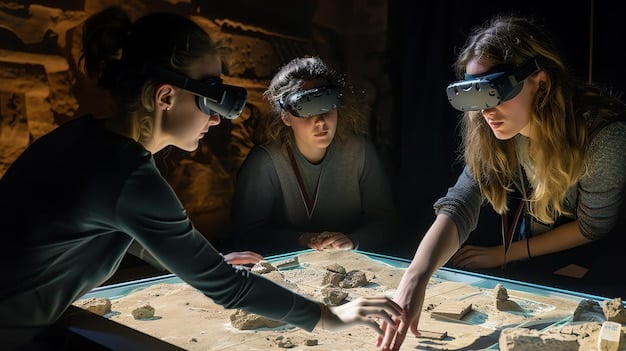
The ultimate goal of this intricate process is to create a digital twin of the past—a highly informed model that serves both as a research tool and an educational resource, enabling deeper engagement with the architectural heritage of ancient America.
Case Studies: Virtual Returns to Ancient American Capitals
The abstract principles of virtual reconstruction come to vivid life through specific case studies, demonstrating the transformative impact of these techniques on our understanding of ancient American architecture. From sprawling urban centers to ceremonial complexes, digital archaeology is offering new perspectives on these remarkable human achievements.
Teotihuacan: Mapping a Mesoamerican Metropolis
The ancient city of Teotihuacan, located in the Valley of Mexico, was one of the largest cities in the ancient world, yet much about its urban planning and residential structures remains debated. Traditional archaeological maps provide a two-dimensional overview, but virtual reconstructions offer a far more immersive and analytical experience. Projects leveraging LiDAR data have created highly accurate digital elevation models of the entire city and its surrounding region, revealing subtle architectural features and an intricate network of waterways and agricultural terraces previously difficult to perceive.
Virtual models of Teotihuacan’s monumental structures, like the Pyramids of the Sun and Moon and the Ciudadela complex, are being meticulously reconstructed. These models allow researchers to hypothesize about sightlines, public gatherings, and the flow of people through different urban sectors. Furthermore, reconstructions of residential compounds offer insights into domestic life, resource management, and social organization within the city. The ability to “walk through” a virtual Teotihuacan provides a scale and context that static images simply cannot convey, enhancing our appreciation for this ancient metropolis.
Machu Picchu: Engineering in the Andes
Machu Picchu, the iconic Inca citadel nestled high in the Andes Mountains of Peru, is a marvel of ancient engineering and architectural adaptation to a challenging terrain. While its stone structures are remarkably preserved, understanding the full extent of its terracing, water management systems, and the purpose of individual buildings benefits immensely from virtual reconstruction. Photogrammetry has been instrumental in creating highly detailed 3D models of the individual stone blocks and their precise alignment, allowing for a deeper study of Inca masonry techniques.
Researchers are using these digital models to analyze the structural stability of the complex, the effectiveness of its drainage systems in heavy rainfall, and the strategic placement of observation points. Virtual flyovers and walk-throughs allow for a comprehensive appreciation of the interplay between human construction and the dramatic natural landscape. By virtually peeling back layers of time, archaeologists can better understand the decisions made by Inca builders in integrating their structures so seamlessly with the Andean environment, highlighting their profound knowledge of both engineering and astronomy.
- Teotihuacan: Virtual models help analyze urban planning, public spaces, and residential layouts, revealing the city’s scale.
- Machu Picchu: 3D reconstructions aid in understanding Inca engineering, water management, and the integration of structures with the landscape.
- Ancestral Puebloan Sites: Virtual tours of multi-story dwellings like Mesa Verde illustrate communities and defensive strategies.
These case studies represent just a fraction of the ongoing virtual reconstruction efforts across the Americas. Each project, regardless of scale, contributes to a growing digital archive of ancient architecture, fostering new questions and inspiring innovative research trajectories. The vividness of these virtual returns to ancient capitals redefines how we engage with and learn from archaeological sites.
Challenges and Limitations: The Unfinished Picture
While virtual reconstruction offers astounding possibilities for understanding ancient American architecture, it is essential to acknowledge the inherent challenges and limitations of the practice. These are not merely technical hurdles but also epistemological considerations that speak to the nature of archaeological inference itself. The goal is to produce the most accurate and responsible representations possible, recognizing that an “absolute” reconstruction of the past is ultimately unattainable.
Data Scarcity and Preservation Bias
One of the most persistent challenges is the scarcity of complete archaeological data. Ancient structures, especially those made of organic materials like wood or thatch, often leave little to no trace. Even stone structures can be heavily eroded, dismantled for later construction, or damaged by natural disasters. This preservation bias means that much of the architectural record is incomplete, requiring significant inference to fill in the gaps. For example, understanding the roofing systems of many ancient American buildings is often speculative, as organic roof components rarely survive. Archaeologists must rely on indirect evidence, such as postholes, wall thickness, or comparative studies, which introduces a degree of uncertainty.
Furthermore, the data that does exist can be unevenly distributed. Some sites are extensively excavated and documented, while others have only been partially explored. This unevenness can lead to biases in our reconstructions, where better-preserved or more thoroughly studied sites might disproportionately inform our broader understanding of ancient architectural styles and practices across a wider region.
The Problem of Interpretation and Subjectivity
Every virtual reconstruction involves a degree of interpretation. When archaeologists and modelers fill in missing details, they are making informed hypotheses based on available evidence. However, different interpretations are possible, and what one researcher deems probable, another might question. This subjectivity is inherent in the archaeological process but becomes particularly visible in a 3D model, where every element must be geometrically defined. For example, the precise height, ornamentation, or color schemes of ancient buildings are often debated, and a virtual model must “choose” one representation, potentially masking alternative possibilities. Responsible reconstruction practices require transparency about the interpretive decisions made during the modeling process, distinguishing between empirically supported elements and those based on inference.
- Incomplete Data: Gaps in archaeological records, especially for organic materials, necessitate significant inference.
- Interpretive Bias: Subjectivity in filling missing details can lead to multiple plausible reconstructions.
- Technological Limitations: Software and hardware constraints can impact the realism and scale of models.
Moreover, the technology itself imposes certain limitations. While 3D modeling software is powerful, creating truly photorealistic and historically accurate textures, materials, and environmental elements requires significant expertise and computational resources. The fidelity of a virtual model is often constrained by budget, time, and the available technical skills. Balancing scientific accuracy with compelling visual presentation is an ongoing challenge.
Despite these challenges, acknowledging and addressing them head-on is crucial for maintaining the academic credibility of virtual reconstruction. By clearly delineating what is known from what is inferred, and by fostering collaborative, peer-reviewed approaches, the field can continue to advance responsibly, providing invaluable but always contextualized insights into ancient American architecture.
Future Directions: AI, VR, and Immersive Heritage
The field of virtual reconstruction of ancient American architecture is dynamic, constantly evolving with advancements in technology and methodologies. The future promises even more sophisticated and immersive ways for both scholars and the public to engage with these vanished worlds, driven by innovations in artificial intelligence (AI), virtual reality (VR), and augmented reality (AR).
Artificial Intelligence and Data Analysis
AI is set to revolutionize how archaeological data is processed and analyzed, significantly streamlining the initial stages of virtual reconstruction. Machine learning algorithms can be trained to identify patterns in LiDAR data, automatically distinguishing natural topographical features from human-made structures, or even detecting subtle traces of buried walls. Furthermore, AI could assist in comparative analysis, quickly sifting through vast databases of architectural elements from different sites and periods to suggest probable forms for incomplete structures.
Imagine an AI assistant that, based on a few surviving foundation stones, could generate multiple statistically probable structural configurations for a building, allowing archaeologists to test various hypotheses more efficiently. While human archaeological expertise will always be paramount for interpretation, AI can drastically reduce the time spent on tedious data processing and initial hypothesis generation, freeing up researchers for deeper analytical work. This could accelerate the pace of virtual reconstruction projects and enable the modeling of even larger, more complex ancient urban landscapes.
The Rise of Immersive Virtual and Augmented Reality
Perhaps the most exciting future direction lies in the increasing sophistication of virtual reality (VR) and augmented reality (AR) technologies. VR environments are already being used to create fully immersive experiences of reconstructed ancient sites, allowing users to “walk” through Teotihuacan or “climb” Machu Picchu as they might have appeared millennia ago. As VR hardware becomes more accessible and powerful, these experiences will become richer, more detailed, and responsive to user interaction. This holds immense potential for education, transforming how students learn about ancient civilizations and enabling virtual tourism for millions.
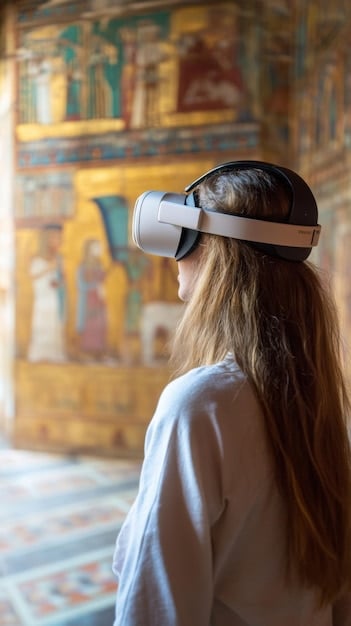
- AI Integration: Automating data analysis, pattern recognition, and proposing structural hypotheses based on fragmented evidence.
- Advanced VR/AR: Creating highly immersive and interactive experiences for education, research, and virtual tourism.
- Haptic Feedback: Enabling users to “feel” reconstructed environments, enhancing the sensory depth of virtual experiences.
Augmented reality, which overlays digital information onto the real world, offers another compelling avenue. Imagine visiting an archaeological site like Chichen Itza and, through a tablet or AR glasses, seeing the ruins overlaid with their virtual reconstructions, showing what the structures looked like in their prime. This could provide an immediate, context-rich experience, blending the present reality of the ruins with their past grandeur.
Beyond visual immersion, future developments might incorporate haptic feedback, allowing users to “feel” the textures of ancient walls, or even olfactory cues to simulate the smells of an ancient city. These multi-sensory experiences would further bridge the gap between the modern observer and the ancient world, transforming archaeological heritage into a truly living experience.
The convergence of AI, VR, and AR promises a future where ancient American architecture can be explored, analyzed, and appreciated in ways previously unimaginable, deepening our connection to these profound legacies.
The Educational and Public Impact of Virtual Reconstructions
Beyond academic research, the virtual reconstruction of ancient American architecture has a profound impact on education and public engagement. These digital creations transcend the limitations of physical ruins, offering dynamic and accessible pathways to explore and understand complex historical narratives. They bridge the gap between abstract academic concepts and tangible, relatable experiences, making ancient history come alive for diverse audiences.
Transforming Learning Experiences
For students of all ages, virtual reconstructions provide an unparalleled learning resource. Textbooks and static images can convey basic information, but immersing oneself in a 3D model of a Mayan city or an Inca mountain fortress offers a level of spatial understanding and contextual awareness that is simply impossible through traditional media. Students can virtually “walk through” ancient marketplaces, observe the scale of ceremonial plazas, or explore the interior of residential compounds. This interactive engagement fosters deeper curiosity and a more intuitive grasp of architectural principles, urban planning, and daily life in these civilizations. It moves learning from passive absorption to active exploration.
Museums and educational institutions are increasingly leveraging these virtual models to enhance their exhibits. Instead of just displaying artifacts, they can now offer complementary virtual experiences that show how those artifacts were used within their original architectural settings. Online educational platforms can host interactive 3D models, making ancient sites accessible to anyone with an internet connection, regardless of geographical location or physical limitations.
Enhancing Public Engagement and Heritage Preservation
For the general public, virtual reconstructions serve as powerful tools for heritage appreciation and tourism. Many ancient American sites, while magnificent, are often in ruins, requiring significant imagination to envision their former glory. Virtual models provide that missing visual component, making visits more meaningful and inspiring a greater appreciation for the complexity and sophistication of ancient cultures. This enhanced engagement can directly contribute to heritage preservation by fostering a stronger public will to protect archaeological sites and their contexts.
- Immersive Education: Provides students with interactive 3D experiences, fostering deeper understanding of ancient sites.
- Accessible Heritage: Makes ancient architecture universally accessible through online platforms and museum exhibits.
- Tourism Enhancement: Enriches site visits by complementing physical ruins with virtual past grandeur, increasing appreciation.
Furthermore, virtual reconstructions can act as a crucial public awareness tool. They can highlight the fragility of archaeological sites, illustrate the impact of climate change or unchecked development, and underscore the importance of responsible tourism and conservation efforts. By virtually rebuilding and animating these ancient structures, we not only pay homage to the ingenuity of past civilizations but also foster a deeper sense of stewardship for their remaining physical legacies.
Ultimately, the educational and public impact of virtual reconstructions extends far beyond mere visualization. They cultivate empathy, inspire curiosity, and forge a powerful connection between the modern world and the enduring architectural achievements of ancient America, ensuring these legacies continue to resonate for generations to come.
| Key Aspect | Brief Description |
|---|---|
| 📊 Data Capture | Utilizes LiDAR, photogrammetry, and GPR for precise 3D archaeological data collection. |
| 🧠 Inference | Archaeologists interpret incomplete data using comparative analysis and historical context. |
| 🚀 Technologies | 3D modeling software, VR/AR, and AI are crucial for reconstruction and interaction. |
| 🌍 Impact | Enhances education, public engagement, and promotes heritage preservation. |
Frequently Asked Questions
▼
Virtual reconstruction in archaeology involves using digital technologies like 3D modeling, photogrammetry, and LiDAR data to create visual representations of ancient structures and sites as they once appeared. This process transforms fragmented archaeological data into immersive and interactive digital models, allowing researchers and the public to explore past environments. It combines scientific data with informed archaeological inference to reconstruct missing architectural elements based on comparative evidence.
▼
The accuracy of virtual reconstructions varies based on the completeness of archaeological data and the rigor of the interpretive process. Elements directly supported by surviving physical evidence are highly accurate. However, sections where data is missing (e.g., roofs, upper stories) rely on archaeological inference, drawing on comparative studies and historical knowledge. Reputable reconstructions clearly distinguish between empirically supported features and those based on informed hypotheses, maintaining scientific transparency about their interpretive aspects.
▼
Key technologies for archaeological data collection for virtual reconstruction include LiDAR (Light Detection and Ranging), which maps large areas and unseen features under vegetation; photogrammetry, used to create 3D models from overlapping photographs of visible structures; and Ground-Penetrating Radar (GPR), which detects buried features non-invasively. These tools provide precise, multi-dimensional datasets that form the basis for detailed digital models, enabling comprehensive understanding before and during excavation.
▼
Virtual reconstructions significantly benefit archaeological research by allowing scholars to analyze ancient structures in a comprehensive and interactive 3D environment. They facilitate testing hypotheses about architectural function, urban planning, and spatial relationships that are difficult to visualize from static maps or ruined remains. These models also serve as powerful communication tools within the academic community, enabling collaboration and more nuanced discussions about past environments and their inhabitants. Moreover, they preserve data digitally, making it accessible for future study.
▼
Yes, increasingly, the public can experience these virtual reconstructions through various platforms. Museums often integrate 3D models into their exhibits, providing interactive displays or virtual reality experiences. Online platforms host digital archives and virtual tours, making ancient sites accessible globally. Augmented reality apps allow visitors at actual archaeological sites to view reconstructed structures overlaid onto the ruins through their devices. These initiatives aim to enhance public engagement, educate about ancient cultures, and foster appreciation for cultural heritage.
Conclusion
The realm of ancient American architecture, once primarily accessible through fragmented ruins and scholarly interpretations, is now being vividly reanimated through the power of digital technology. Virtual reconstruction, fueled by advanced archaeological data and sophisticated modeling techniques, is transforming how we perceive, study, and appreciate the monumental achievements of civilizations long past. From providing new insights for researchers to offering immersive educational experiences for the public, these digital models are proving invaluable. While challenges of data incompleteness and interpretive subjectivity remain, the ongoing advancements in AI, VR, and AR suggest a future where our connection to these ancient worlds will become even more profound and intimately detailed. This journey of virtual rediscovery not only celebrates the ingenuity of our ancestors but also reinforces the critical importance of preserving their tangible legacies for generations to come.
